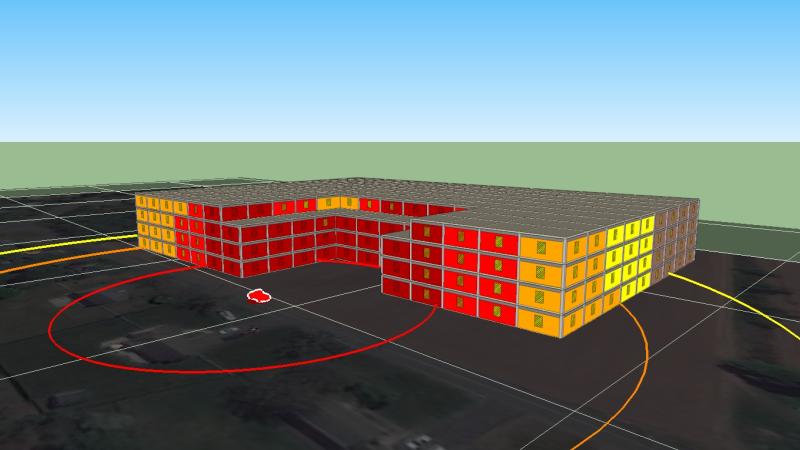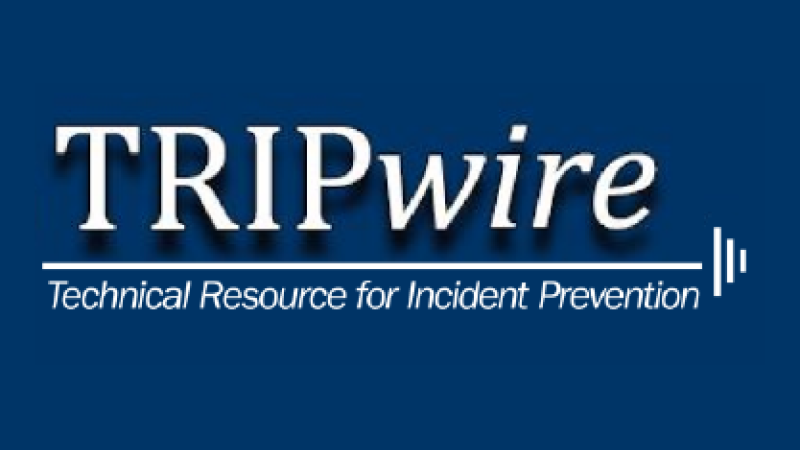
Protective Measures
Determine best practices to identify risks and vulnerabilities to mitigate Improvised Explosive Device (IED) threats to critical infrastructure.
What to Do: Protective Measures
Having general knowledge to identify risks and vulnerabilities of facilities, venues, and event locations is vital to mitigating potential Improvised Explosive Device (IED) threats. Protective measures are used to control risk and reduce the likelihood of such an event.
Site-specific protective measures prevent perpetrators from accessing intended target sites and protect people and assets should attacks occur. These measures may also deter potential perpetrators from considering attacks against protected sites because of the challenges that they present.
Protective measure tools are especially valuable as proactive approaches at special events and public gatherings for facility owners/operators and public safety officers.
The implementation of protective measures is organized around the five “Ds” of security:
- Deter – systems that cause someone to not enter an area (signage indicating the presence of a K-9).
- Detect - systems designed to identify an unauthorized person/thing in a protected area (cameras, intrusion detection systems).
- Delay - systems designed to slow down a person’s access to an area (fences).
- Deny - designed to refuse or grant a person access to an area (fences with razor wire, high walls).
- Defend - the ability to interrupt and/or neutralize a potential threat as it attempts to exploit a vulnerability or breach a security measure (counter UAV measures, security with authority to apprehend, firewalls within cybersecurity systems).
Different facilities/venues require different protective measures for effective action. These actions may include but are not limited to monitoring the situation, monitoring for suspicious behaviors, limiting access to critical areas, or conducting a security search or sweep.
By prioritizing these recommendations, facility owners, operators, and public safety officers can significantly reduce the likelihood of successful attacks and better protect people and assets from potential IED threats.
- Review or conduct vulnerability assessments of potential targets and prioritize physical security efforts. Analysis should weigh benefits, potential impacts to facility operations, and acceptable costs.
- Include subject matter experts in blast effects, such as engineers and other professionals, on planning teams. Blast-experienced professionals are accustomed to considering the effects of explosions on structures. These professionals will be able to assist planners with identifying blast-sensitive requirements and developing and implementing IED-specific protective measures.
- Ensure sites maximize standoff. The primary strategy for preventing, protecting against, and mitigating explosive threats is to keep explosive devices as far away as possible, known as maximizing standoff distance. Protective measures that provide standoff distance include physical and natural barriers that prevent IEDs from getting close to buildings and people. This may include vehicle checkpoints and barriers, pedestrian entry control points or screening lines, and mail screening facilities.
- Ensure sites provide a layered defense. A defense that relies on multiple consecutive layers of protective measures around an asset mitigates manmade threats, including use of IEDs. Layers are mutually independent and designed to reduce the effectiveness of an attack by forcing attackers to penetrate and overcome each security layer.
- Incorporate blast-resistant features and materials into new and existing sites. In situations where sufficient standoff distance or layered defense is not achievable, structural hardening and use of blast-resistant features and materials is particularly important.
- Develop plans for deploying temporary protective measures. High or elevated-risk sites may consider deploying assets to extend standoff distance or screen for explosives and IEDs. Additional temporary protective measures include maximizing standoff and layering defense by adding temporary outer, middle, or inner security perimeters to address vehicle, personnel, and item access.
The deployment of these measures should be informed by thorough vulnerability assessments and involve experts in blast effects to ensure that protective strategies are both practical and effective. Maximizing standoff distance, providing layered defenses, incorporating blast-resistant features, and planning for temporary protective measures are all critical components in safeguarding against explosive threats.
Training
Access training courses on how to identify risks and vulnerabilities to mitigate IED threats to critical infrastructure.
For more information about the Office for Bombing Prevention (OBP) Training Program and the types of courses we offer, visit the OBP Training page.
IED Explosive Effects and Mitigation Course (AWR-337)
Protective Measures Awareness Course (AWR-340)
Protective Measures Course (PER-336)
VBIED Detection Course (PER-312)
Products
Learn to identify risks and vulnerabilities to mitigate IED threats to critical infrastructure.
Suspicious UAS Identification Poster and Postcard
VBIED Identification Card
Vehicle Inspection Video
Tools/Services
Leverage tools and services to assist with identifying risks and vulnerabilities to mitigate IED threats to critical infrastructure.

Counter-Improvised Explosive Device (C-IED) Capability Assessments (CCA)

Explosive Blast Modeling (EBM) Assessment

Technical Resource for Incident Prevention (TRIPwire) Portal

TRIPwire
To access more bombing prevention resources, visit the Technical Resource for Incident Prevention (TRIPwire). TRIPwire is an online, collaborative information-sharing and resource portal designed to help prevent improvised explosive device incidents.
Contact
To report suspicious activity, call 9-1-1 or contact local law enforcement.
For additional information about OBP resources, please contact your local Protective Security Advisor (PSA) or OBP directly at OBP@cisa.dhs.gov.
Informed, alert communities play a critical role in keeping our nation safe. Everyone has a responsibility to protect our nation—"If You See Something, Say Something."




